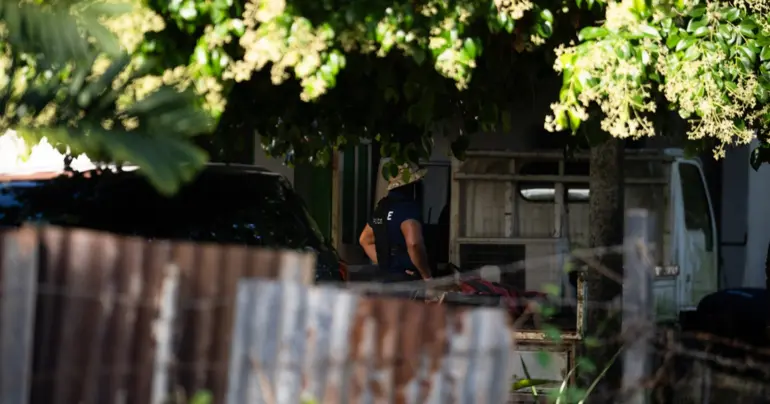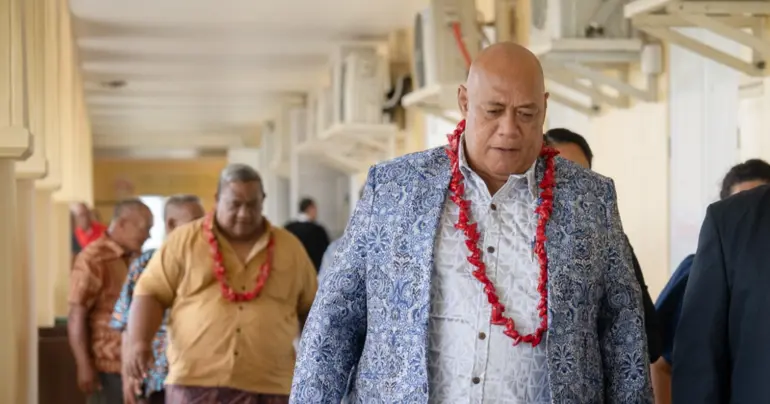China explains role in dispute
The Chinese Embassy in Samoa yesterday called a rare press briefing to explain its role in the ongoing South China Sea dispute, with the Philippines and others.
Held at the Chinese Embassy in Vailima, the meeting was fronted by the Embassy’s Deputy Head of Mission, Gu Xinqiang, who said the people of Samoa deserve to know the ‘truth’ about what is happening.
“China is a victim in this issue,” he said. “But we are committed to solve this dispute in a peaceful manner through negotiations and consultations.
This is best done by establishing rules and mechanisms.”
The briefing in Apia comes as the United Nations Arbitration Court is expected to issue a ruling in the coming weeks on a long-standing maritime dispute between China and the Philippines.
The Philippines had initiated the proceedings in January 2013, arguing that Beijing's claims over much of the South China Sea violated U.N. conventions.
But China has refused to participate in international arbitration.
Instead, it has been pushing for a bilateral approach to settling the territorial dispute. China claims almost all of the South China Sea, which it delineates on its map with a "nine-dash line".
“The Philippines not only violated their agreements with China, but they also violated the provisions of the UN clause and abused its procedures,” Mr. Xingqiang said.
He maintained that China will not participate in the U.N. arbitration proceedings and will not recognise the ruling.
“The compulsory settlement procedure provided in the UN clause does not apply to the disputes between China and the Philippines.”
As a country in the middle of the vast Pacific Ocean, Mr. Xinqiang said Samoa is classified as a “sea country” and the dispute involving the South China Sea would interest the people of Samoa since it involves the “international law of the Sea.”
“We think it is an important issue to provide a sort of global knowledge for the people here in Samoa,” he said.
“The term South China Sea has become a buzzword in the recent years and we feel it’s important to enlighten the people about what is happening.”
Asked how China feels about the Philippines’ decision, the Deputy Head of Mission was blunt.
“If one country forces another country to international arbitration or tribunal, without consulting the other country first, we fear that this could somehow become a trend in solving problems in the future,” he said.
“This is a scenario that could also happen in the South Pacific region, and therefore we found it important to inform the people of Samoa about the issue”
Mr. Xinqiang argued that the ocean in dispute belongs to China.
“The South China Sea islands have been China’s territory for centuries. During the 1970’s, there were amounts of natural resources, like oil and gas reserves discovered in the area.”
Asked what China’s next move will be, Mr Xingqiang said his country will “continue not to accept the tribunal done by the Philippines.”
He added that their hope is to achieve “a peaceful solution.”
It was neither possible to obtain a comment from the Phillipines’ government nor the Samoan government at press time last night.
BACKGROUND INFORMATION ABOUT THE DISPUTE FROM THE STRAITS TIMES THE SOUTH CHINA SEA'S IMPORTANCE
The 3.5 million sq km sea is believed to hold rich reserves of oil, natural gas, fisheries stocks, and hosts lanes for half the world’s commercial shipping. It is claimed in parts or wholly by China, the Philippines, Vietnam, Brunei, Malaysia and Taiwan. Many of the claims overlap.
CHINA'S CLAIM
China claims almost all of the South China Sea, which it delineates on its map with a "nine-dash line".
The UN Convention on the Law of the Sea (Unclos), of which China is a signatory state, gives countries exclusive economic zones of 200 nautical miles, or 370km, from their coasts. But China says its claim stems from historical use of the sea by Chinese vessels as far back as 2,000 years ago.
Beijing has been shoring up its position through land reclamation works. A Pentagon report released in May estimated China has reclaimed 1,300ha of land around the Spratly Islands, also claimed by the Philippines, over the past two years. The Chinese have also built massive structures, including radar systems and airstrips, on the reclaimed reefs and islets.
Beijing, on the other hand, is wary of growing US attention on Asia and US forays into the sea, including sailing warships close to reclaimed islands.
China has maintained that it will not participate in the UN arbitration proceedings and will not recognise the ruling. It says Manila's case relates to an issue of territorial sovereignty, over which the tribunal has no jurisdiction, instead of the interpretation or application of Unclos.
THE PHILIPPINES' CLAIM
The country claims the Spratly Islands, known as Nansha by China. The group's main Mischief Island sits less than 240km off the Philippines’ Palawan Island and some 900km from China’s Hainan Island.
The Philippines also lays claim to the Scarborough Shoal (known as Huangyan Island in China), which is a little more than 160km from the Philippines and 800km from China.
Both the Spratlys and Scarborough Shoal are also claimed by China.
THE US POSITION
The United States has described the South China Sea issue as one of its vital national interests. Washington fears Beijing is seeking to impose military controls over the entire area, which could curtail the unfettered use of international waters and air space by the US military. It also baulks against an attempt by another strong state to bully America's smaller allies in the region.
US military planes and ships have conducted "freedom of navigation" sorties near the Spratlys and Scarborough Shoal in recent months to underscore Washington's position, much to China's displeasure.
OTHER CLAIMANTS AND COUNTRIES
Taiwan, which China sees as a renegade province and is not recognised as an independent state by most of the world, has intervened in the UN arbitration case in April, to press its own claim.
Vietnam, Malaysia, Indonesia have dispatched representatives to the hearings. So has Japan, which is embroiled in its own territorial dispute with China in the East China Sea. Vietnam has provided a submission in support of the Philippines’ arguments that the court has jurisdiction and asked the tribunal to pay due attention to Vietnam's legal rights and interests.
Such moves indicate that some of these countries might also take China to court in future.
The European Union has said that China should respect the ruling.
China's Foreign Ministry, meanwhile, has claimed support from countries as diverse as Cambodia and Yemen.











